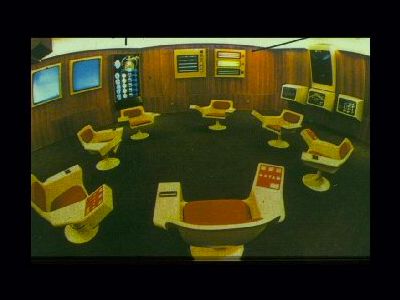
This is my favourite image of the whole presentation (source).
It’s a control room from Project Cybersyn. In 1970-1973, the revolutionary Chilean government managed to recruit Stafford Beer, a cyberneticist who worked on the feedback loops of management in corporations. He was pretty famous at the time. They were designed by Gui Bonsiepe, a German modernist.
Anyway, the Chilean government called him up, and he built what he called “an electronic nervous system” connecting all parts of the country to the government.
It all worked by telex, and there were 7 seats in the control rooms because that was known to be the most efficient. The swivel chairs encouraged creativity.
These rooms would feed complaints, comments and statistics up and down to the government, and it meant a centrally planned economy actually worked, and the government could respond appropriately. Factories installed it on their floors, because they could tell the government what they needed, and it was liked centrally too because they had up-to-date stats the whole time. Feedback loops and cybernetics again!
But the government fell, and the next one didn’t like it so much – it was pretty egalitarian actually – so they ripped the whole thing out.
Huh.
More: The Guardian on the ‘socialist internet’; lessons of Stafford Beer; more images and a short write-up of Project Cybersyn.